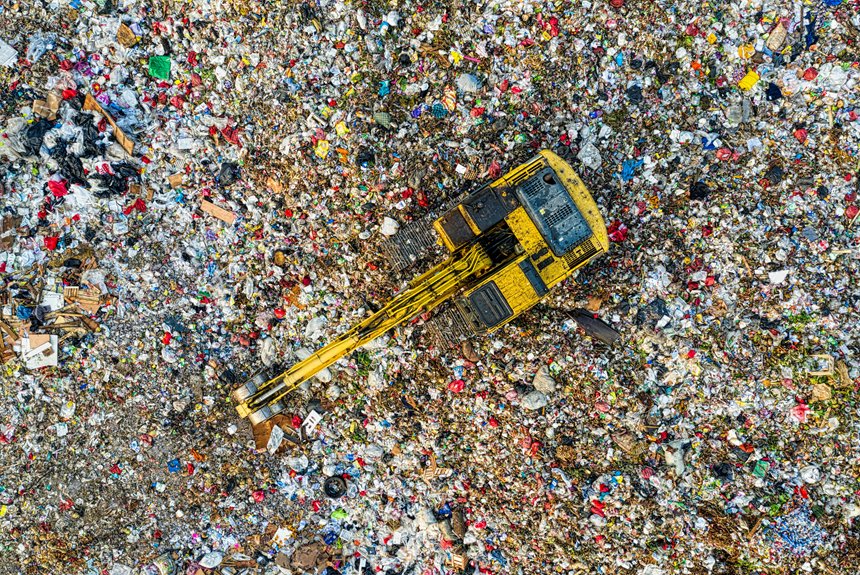When your garbage disposal gets clogged, it can be frustrating, but you can fix it quickly with the right steps. First, ensure you’re safe by unplugging the unit or turning off the circuit breaker. Next, you’ll want to inspect for any visible obstructions. If you hear unusual sounds, it could indicate a jam. Knowing how to handle these issues effectively can save you time and hassle. Ready to tackle the problem?
Identify the Cause of the Clog
To tackle a clogged garbage disposal effectively, you first need to identify the cause of the blockage.
Start by checking for any visible obstructions in the disposal unit. Use a flashlight to illuminate the area, and look for food scraps, utensils, or other debris that might be stuck.
Next, listen for unusual sounds when you turn it on; grinding noises might indicate something’s jammed. If it hums without spinning, it could be a jammed flywheel.
You can also run water through the unit to see if it drains slowly, which might suggest grease buildup.
Once you’ve pinpointed the issue, you’ll be better prepared to fix your disposal and restore its functionality.
Safety First: Prepare for the Fix
Before diving into the repair, it’s crucial to prioritize safety. First, unplug the garbage disposal or turn off the circuit breaker to eliminate any risk of electric shock.
Next, gather your tools: a flashlight, pliers, and a wrench. Make sure you wear rubber gloves to protect your hands from sharp objects and debris. If you’re working near water, wear slip-resistant shoes to avoid accidents.
Clear the area under the sink, removing any items that could get in the way. Check for any visible leaks or damage before you start.
Lastly, ensure you have a bucket handy to catch any water or debris that may spill out during the process. Taking these steps will help keep you safe while you fix your disposal.
Use a Manual Reset Button
One of the first steps to take when your garbage disposal isn’t working is to use the manual reset button. This button is usually located on the bottom or side of the disposal unit.
First, unplug the disposal or switch off the circuit breaker to ensure safety. Next, locate the red reset button, which may be slightly recessed. Press it firmly until you hear a click. This indicates it’s reset.
After resetting, plug the disposal back in or turn the circuit breaker on. Finally, test the disposal by running water and turning it on.
If it works, you’ve likely resolved the issue. If not, you may need to explore further troubleshooting options.
Clear the Clog With Household Tools
When your garbage disposal is clogged, household tools can help you clear the blockage effectively.
Start by unplugging the disposal for safety. Use a flashlight to inspect the grind chamber for any visible obstructions, like food scraps or utensils. If you spot something, use tongs or pliers to carefully remove it.
Next, grab a hex wrench, usually found in your disposal’s manual, and insert it into the bottom of the unit. Turn it back and forth to help dislodge any stubborn debris.
If the clog persists, try pouring a mixture of baking soda and vinegar down the drain, followed by hot water. This can break down grease and other clogs.
Finally, plug the disposal back in and run water to check if it’s clear.
Prevent Future Clogs With Proper Use
To keep your garbage disposal running smoothly and prevent future clogs, proper usage is key.
First, always run cold water while using the disposal. This helps food particles move through the pipes more easily.
Second, avoid putting fibrous or starchy foods, like celery or potato peels, down the disposal, as they can wrap around the blades or create a thick paste.
Third, feed small amounts of food gradually rather than overloading it at once.
Lastly, regularly clean your disposal with ice cubes and rock salt to help dislodge any buildup.
Conclusion
By following these steps, you can quickly fix a clogged garbage disposal and get it running smoothly again. Always remember to prioritize safety by unplugging the unit first. With a bit of inspection and the right tools, you can clear out most clogs in just minutes. To avoid future issues, be mindful of what you put down the disposal. Regular maintenance and proper usage will keep your disposal in top shape for years to come.
